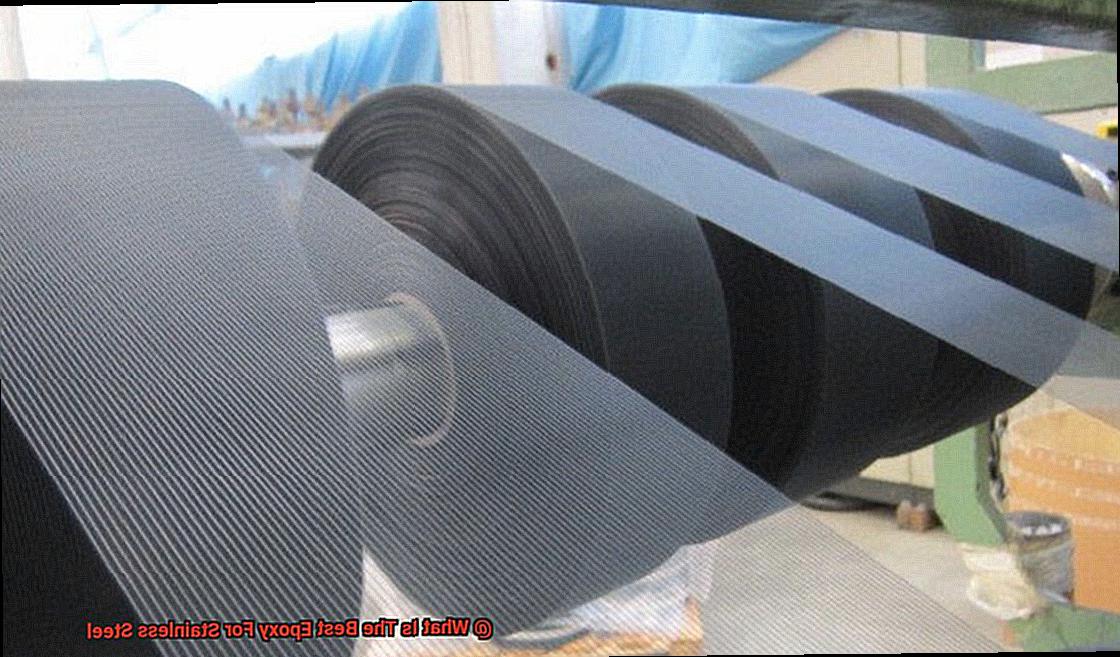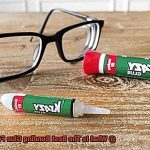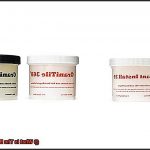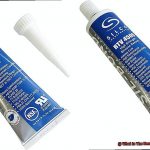Sick of the never-ending headache that comes with fixing stainless steel?
Well, guess what? I’ve got the ultimate secret weapon that’ll change the game for you – the best epoxy for stainless steel.
Now, finding the perfect adhesive for your stainless steel woes can be a real pain in the you-know-what. But fear not, my friend.
I’ve done all the grunt work and found the top-notch epoxy solution that’ll make your stainless steel projects a walk in the park. In this blog post, we’re gonna dig deep into the world of epoxy adhesives, exploring their awesome features and benefits.
So kick back, relax, and let’s uncover that adhesive gem that’ll make your life so much easier.
Understanding the Properties of Stainless Steel
Contents
Delve into the world of stainless steel properties as we explore its key characteristics and guide you in choosing the ideal glue for your stainless steel projects.
Properties of Stainless Steel:
Stainless steel is renowned for its exceptional properties, making it a popular choice across various industries. Let’s delve into the remarkable characteristics that set stainless steel apart:
- Corrosion Resistance: The chromium content in stainless steel triggers the formation of a thin oxide layer on its surface, creating a fortress-like shield against corrosion and staining. When selecting an epoxy adhesive, it is crucial to ensure it does not compromise the corrosion resistance of stainless steel.
- Strength and Durability: Stainless steel boasts remarkable strength and durability, enabling it to withstand extreme temperatures and harsh weather conditions without compromising its structural integrity. Ensure your epoxy adhesive provides a strong and enduring bond that matches the resilience of stainless steel.
- Hygienic Nature: With its smooth, non-porous surface, stainless steel is easily cleaned and sterilized, making it perfect for applications in industries like food and healthcare. An epoxy adhesive used on stainless steel should preserve its hygienic properties without introducing any contamination risks.
- Aesthetic Appeal: The sleek, reflective surface of stainless steel lends it a modern and captivating look, making it a favored choice for architectural and design purposes. It is crucial to choose an epoxy adhesive that leaves no visible residue or marks on the stainless steel surface, preserving its aesthetic appeal.
- Versatility: Stainless steel can be conveniently shaped and fabricated into various forms, offering customization and flexibility across different applications. Consider an epoxy adhesive that seamlessly bonds with different shapes and forms of stainless steel, ensuring reliable adherence regardless of project requirements.
Selecting the Right Epoxy Adhesive:
When choosing an epoxy adhesive for bonding stainless steel, several factors come into play:
- Bonding Capabilities: Opt for a two-part epoxy specifically formulated for metal bonding, as they provide excellent adhesion to stainless steel surfaces. These epoxies typically consist of separate resin and hardener components that require mixing prior to application.
- Corrosion and Chemical Resistance: Ensure your chosen epoxy adhesive is resistant to corrosion and chemicals, safeguarding the natural resistance of stainless steel against rust and staining.
- Temperature Resistance: Given the exposure of stainless steel to high temperatures, select an epoxy adhesive that can withstand these conditions without melting or degrading.
- Ease of Application: Choose an epoxy adhesive that offers ease of use and application, with a viscosity and consistency suitable for your specific project needs.
The Importance of Bonding Strength
Today, we dive into the world of bonding strength in epoxy for stainless steel. If you’re looking to create a rock-solid bond that can withstand the test of time, this article is for you. Join us as we explore the significance of bonding strength and its impact on the overall performance of stainless steel adhesives.
Ensuring Structural Integrity:
Imagine a construction project where stainless steel components are subjected to heavy loads or intense stress. In such scenarios, a weak bond could spell disaster. By providing excellent bonding properties, high strength, and resistance to chemicals and moisture, epoxy ensures structural integrity, safeguarding your projects against failure. With a strong bond, you can rest assured that your stainless steel structures will stay intact, even in the face of immense pressure.
Corrosion Resistance:
Stainless steel is renowned for its corrosion resistance. However, when bonded with another material using epoxy, any weak points in the bond become vulnerable to corrosion. A strong bond acts as a shield, preventing moisture or corrosive substances from damaging the stainless steel. Protect your projects from unsightly rust and degradation with a robust epoxy bond. With a powerful adhesive holding your stainless steel together, you can confidently tackle even the most corrosive environments.
Aesthetics Matter:
In applications where appearance matters, such as architectural designs or decorative metalwork, a strong bond is essential. It ensures there are no visible gaps or weak spots between stainless steel components. Not only does this enhance visual appeal, but it also prevents contaminants from seeping in and causing future damage. Create seamless and visually stunning stainless steel structures with an adhesive that provides superior bonding strength.
Surface Preparation is Key:
To achieve optimal bonding strength, proper surface preparation is crucial. Thoroughly clean and degrease the stainless steel surfaces, removing any contaminants that could hinder the bonding process. Additionally, roughening the surface through sanding or etching enhances mechanical adhesion, resulting in an even stronger bond. Take the time to prepare your stainless steel surfaces properly, and you’ll be rewarded with a bond that surpasses expectations.
Corrosion and Chemical Resistance
In this blog post, we will explore the factors that go into choosing the perfect epoxy for stainless steel. Whether you’re a DIY enthusiast or an industry professional, get ready to unlock the secrets of bonding strength that will keep your stainless steel projects solid and visually stunning.
Factor 1: Chemical Resistance
Stainless steel may be corrosion-resistant, but it’s not invincible against certain chemicals. Look for an epoxy with exceptional chemical resistance that can withstand acids, alkalis, and solvents. This ensures your stainless steel remains free from pitting, staining, or degradation caused by exposure to corrosive substances.
Factor 2: Moisture and Humidity Protection
Damp or humid environments spell trouble for stainless steel, especially when chlorides or aggressive ions are present. Choose an epoxy that acts as a formidable barrier against moisture, preventing corrosive agents from penetrating. This protective shield preserves the integrity of your stainless steel surface.
Factor 3: Temperature Extremes
Consider the temperature range your stainless steel will endure. Some epoxies lose their effectiveness at high temperatures, compromising corrosion resistance. To ensure long-lasting protection, select an epoxy that can withstand extreme temperatures without sacrificing its ability to shield against corrosion.
Factor 4: Strong Adhesion
For a durable bond between epoxy and stainless steel surfaces, strong adhesion is paramount. This prevents delamination or detachment of the coating, which leaves your stainless steel vulnerable to corrosion. Find an epoxy that guarantees a robust connection between the two materials.
Factor 5: Additional Requirements
Don’t forget any unique specifications for your application. If your stainless steel will be exposed to UV radiation, choose an epoxy with UV stability. This ensures your epoxy won’t degrade under prolonged sunlight exposure, providing enduring protection.
Temperature Resistance
When it comes to choosing the best epoxy for stainless steel, temperature resistance is a crucial factor to consider. Stainless steel is frequently exposed to high temperatures in various applications, including industrial machinery, automotive parts, and kitchen appliances. Therefore, the epoxy used must be able to withstand these elevated temperatures without compromising its adhesive properties or deteriorating.
The temperature resistance of an epoxy is determined by its heat resistance rating, which indicates the maximum temperature at which the epoxy can maintain its strength and stability. Different epoxies have different temperature resistance capabilities, so it’s essential to find one that matches the specific temperature requirements of your stainless steel application.
Luckily, there are high-quality epoxies specially designed for bonding stainless steel that offer exceptional temperature resistance. These epoxies are like superheroes, engineered to withstand extreme heat and maintain their adhesive properties even at scorching temperatures. They contain special additives and fillers that enhance their thermal stability, ensuring they can endure the demanding conditions that stainless steel may encounter.
However, not all epoxies are created equal in terms of temperature resistance. Some may have a higher heat resistance rating than others, allowing them to withstand more extreme temperatures. Therefore, it’s crucial to review product specifications and consult with experts or manufacturers to ensure you choose an epoxy with the appropriate temperature resistance for your specific stainless steel application.
But temperature resistance is just one piece of the puzzle when selecting the best epoxy for stainless steel. Other factors like curing time, bond strength, and chemical resistance also need to be considered. By evaluating all these aspects collectively, you can find an epoxy that not only withstands high temperatures but also provides a durable and reliable bond with stainless steel.
Ease of Application
Don’t let the challenge of gluing stainless steel deter you. With the right epoxy adhesive, conquering this task can be a breeze. In this article, we will delve into the depths of ease of application when it comes to bonding stainless steel. From viscosity to working time, packaging to odor levels, we’ll uncover all the secrets to help you make an informed decision and achieve a flawless bond.
Viscosity:
The key to effortless application lies in the viscosity or thickness of the epoxy. Opt for epoxies with a lower viscosity, as they gracefully flow and glide over the stainless steel surface. This guarantees unparalleled coverage and banishes any worries about air bubbles or voids compromising your bond.
Working Time:
An epoxy’s pot life holds the key to your success – it defines the time available for mixing, applying, and positioning before curing kicks in. Longer pot life epoxies grant you flexibility and a relaxed application process. Short pot life epoxies demand precision and quick action, making them not-so-forgiving for beginners.
Packaging and Dispensing:
Say goodbye to messy mishaps with syringe-style applicators. These gems offer controlled and precise dispensing, minimizing mess and maximizing efficiency during application. Alternatively, some epoxies require manual mixing of two separate components – a dance that demands time and precision to avoid a sticky situation.
Odor and Toxicity Levels:
Take a breath of fresh air with low odor and toxicity epoxies. Especially if you have sensitivities or are working in poorly ventilated areas, opt for these gentle giants. They promise an application process that is as comfortable as it is productive, without compromising your well-being.
Two-Part Epoxies for Metal Bonding
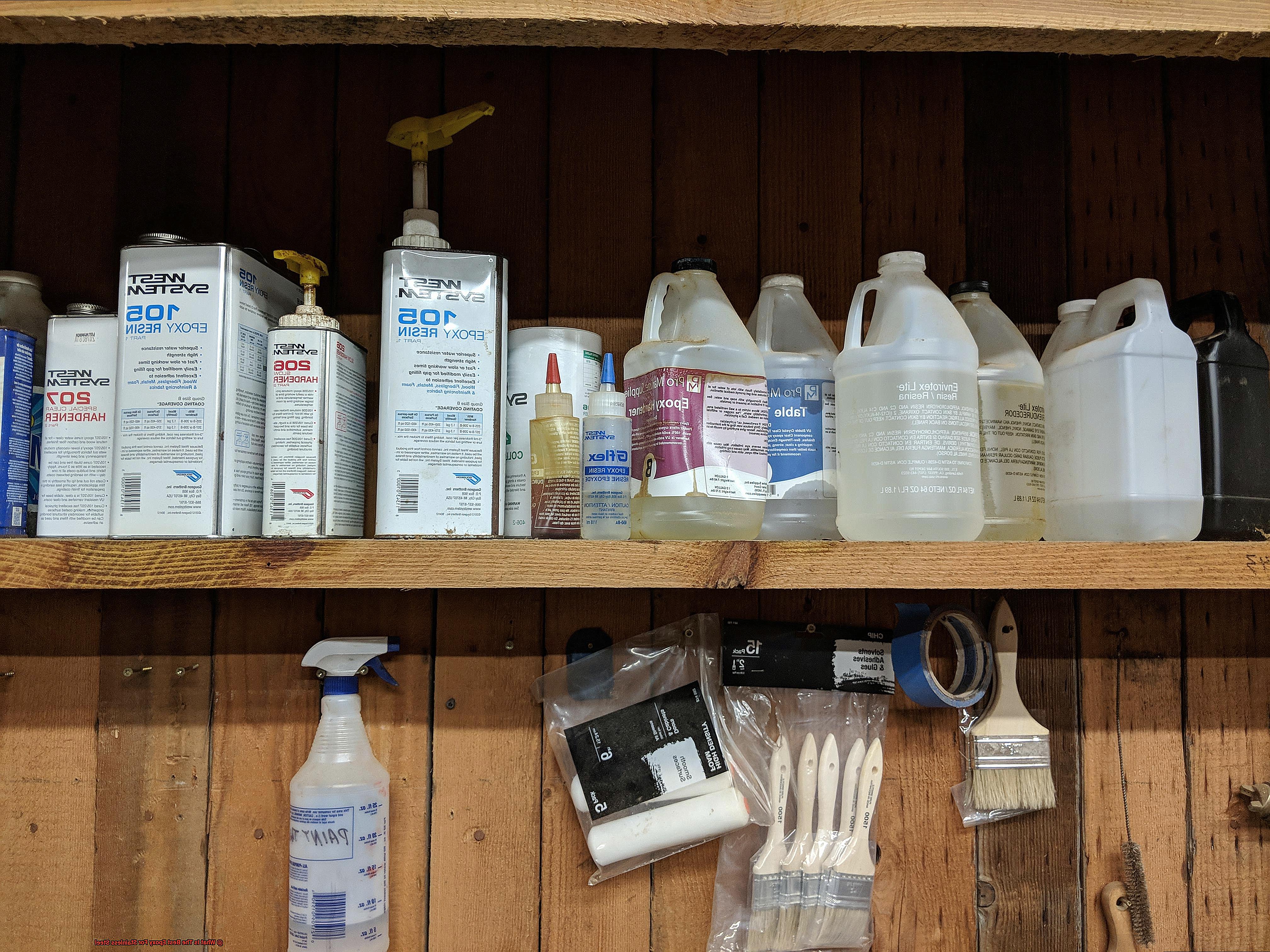
Two-part epoxies are the ultimate solution for bonding metal, especially when it comes to the notorious challenge of stainless steel. These extraordinary adhesives are specifically formulated to provide a strong and durable bond, capable of withstanding even the harshest environments.
The advantages of two-part epoxies for metal bonding, particularly on stainless steel surfaces, are numerous and remarkable. Let’s delve into these benefits and discover why these adhesives are a game-changer.
First and foremost, two-part epoxies offer superior bond strength. They possess the power to hold metal pieces together firmly, ensuring a long-lasting connection that won’t let you down. No matter the conditions – extreme temperatures, exposure to chemicals, or moisture – these adhesives rise to the challenge, maintaining their integrity and effectiveness.
Versatility is another key feature of two-part epoxies. Whether you’re working on structural or non-structural bonding projects, these adhesives have got you covered. From fixing a broken stainless steel railing to creating a beautiful metal sculpture, two-part epoxies become your trusty sidekick, ready to take on any task.
However, using these epoxies effectively requires some know-how. Proper surface preparation is crucial for achieving a successful bond. Just like baking a cake, you need a clean canvas to create a masterpiece. Ensure your stainless steel surface is thoroughly cleaned, dried, and free from any grease or oil that could hinder the adhesive’s performance.
Once your surface is prepped, it’s time for the mixing process. Two-part epoxies consist of two components – a resin and a hardener. These elements must be mixed together in the recommended ratio to ensure optimal performance. Deviating from this ratio could result in weak bonds or even failure. Take care to follow the instructions precisely.
Now comes the application phase. Evenly apply the mixed epoxy onto your stainless steel surfaces using either a brush or an applicator. Be thorough, covering the entire bonding area without excess that could lead to drips or uneven bond lines. Take your time and apply the adhesive with precision.
After application, patience is required. Allow the epoxy to cure according to the manufacturer’s instructions. This entails giving it sufficient time to harden and reach its maximum strength. Remember, good things come to those who wait.
And there you have it – your stainless steel pieces are now bonded together like a match made in heaven. Two-part epoxies for metal bonding come in various formulations, allowing you to select the perfect adhesive for your specific needs.
Popular Brands for High-Quality Epoxies
When it comes to finding the perfect adhesive for bonding stainless steel, you need a high-quality epoxy that can withstand the toughest challenges. Let’s explore some of the most popular brands that produce exceptional epoxies specifically designed for stainless steel bonding.
First on our list is Loctite. Renowned for its exceptional bond strength, durability, and resistance to chemicals and extreme temperatures, Loctite offers a range of epoxy adhesives perfect for stainless steel bonding. With Loctite, you can trust that your stainless steel project will stay firmly intact.
Next up is JB Weld, a brand well-loved by both DIY enthusiasts and professionals. JB Weld’s epoxy adhesives are known for their versatility and strength, making them ideal for a wide range of applications. From small repairs to heavy-duty projects, JB Weld has got your back.
For heavy-duty applications, look no further than Devcon. Devcon’s high-quality epoxies are specifically designed to handle tough jobs. With excellent adhesion properties and resistance to impact, Devcon ensures your stainless steel project gets done right.
PC Products is another top brand for stainless steel bonding. Their epoxies provide high bond strength, durability, and resistance to water and chemicals. With PC Products, your stainless steel project will stand the test of time.
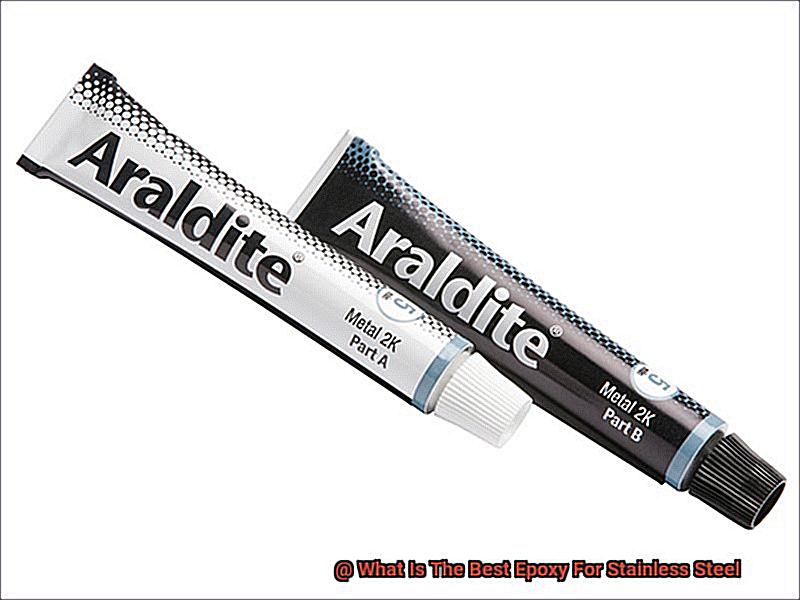
Lastly, we have 3M, a name synonymous with quality adhesive solutions. 3M offers a range of reliable epoxies suitable for stainless steel bonding. With excellent adhesion properties, versatility, and resistance to heat and chemicals, 3M epoxies are a reliable choice for any stainless steel project.
Remember, when choosing the best epoxy brand for your stainless steel bonding needs, consider factors such as application requirements, desired strength and durability, and compatibility with the stainless steel surface. Thorough research and reading customer reviews are always recommended before making a final decision.
XObmZIbHOzY” >
Conclusion
In conclusion, the quest for the best epoxy for stainless steel may seem overwhelming. But fear not, armed with knowledge about stainless steel properties and careful consideration of various factors, you can confidently make an informed choice.
Stainless steel is a powerhouse in terms of corrosion resistance, strength, hygiene, aesthetics, and versatility. When it comes to selecting an epoxy adhesive for this remarkable material, it’s crucial to find one that doesn’t compromise these qualities.
Strength is paramount. A robust bond ensures structural integrity and prevents unsightly delamination or detachment. It’s all about creating flawless structures that catch the eye.
Corrosion and chemical resistance are vital to shield stainless steel from pitting, staining, or degradation caused by harsh substances. Don’t forget moisture and humidity protection – essential defenses against damage in damp environments.
Temperature resistance is a must-have for applications where stainless steel faces scorching heat. Choose an epoxy that can handle the heat without losing its adhesive superpowers.
But let’s not forget about ease of application. Consider factors like viscosity (how smoothly it spreads), working time (because nobody wants a race against the clock), packaging and dispensing methods (because convenience matters), odor levels (no need to offend your senses), and toxicity (safety first.).
For ultimate bonding prowess, turn to two-part epoxies specifically designed for metal bonding. These bad boys offer superior strength and incredible versatility. Just remember: proper surface preparation is key before applying these adhesives – don’t skimp on the prep work.
When it comes to trusted brands in the world of high-quality epoxies for stainless steel bonding, look no further than Loctite, JB Weld, Devcon, PC Products, and 3M. Consider your specific application requirements and compatibility with your stainless steel surface when choosing among these industry leaders.
So there you have it – armed with thorough research and customer reviews – you’re ready to conquer the challenge of finding the best epoxy for stainless steel.

